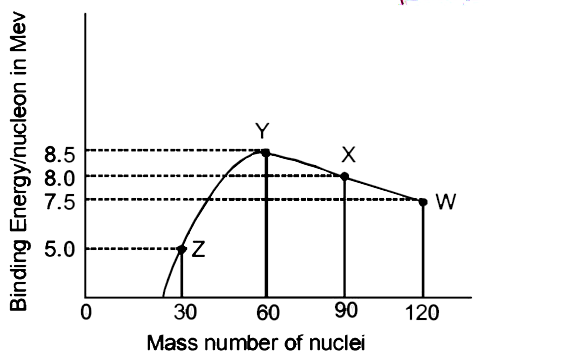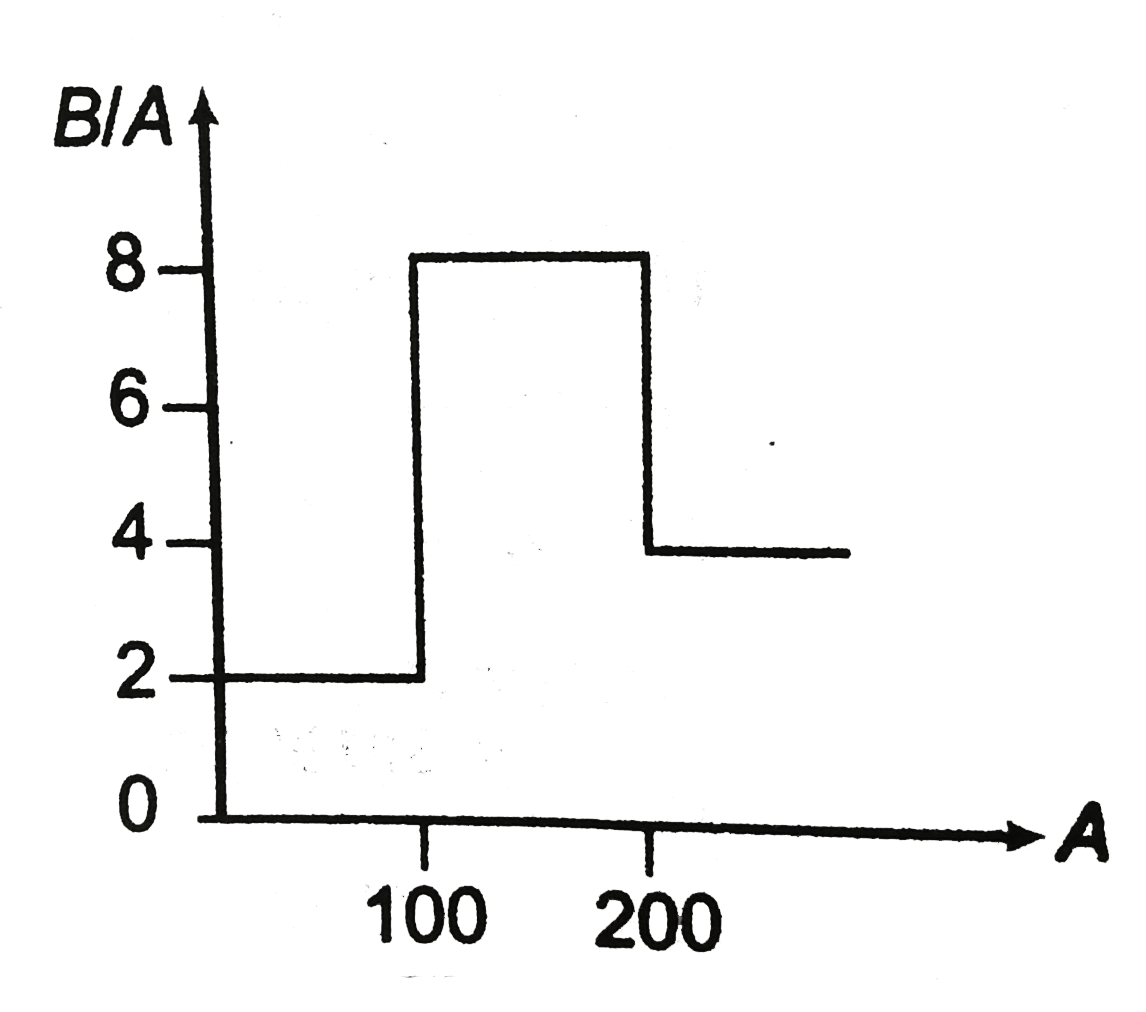Complete Solutions to Example of chapter MODERN PHYSICS - 2 of Class 12 book with complete answers and questions
| Class 12 | PHYSICS |
| Chapter | MODERN PHYSICS - 2 |
| DC PANDEY | Example |
| Number Of Questions | 16 |
| Academic Year | 2023-24 |
Mass number of a nucleus X is A and atomic number is Z. Find mass number and atomic number of the new nucleus (say Y) after the emission of m-alpha particles and n-beta particles.
View SolutionAt time `t=0` , number of nuclei of a radioactive substance are 100. At `t=1` s these numbers become 90. Find the number of nuclei at `t=2 s`.
View SolutionAt time `t=0`, activity of a radioactive substance is 1600 Bq, at t=8 s activity remains 100 Bq. Find the activity at t=2 s.
View SolutionFrom a radioactive substance `n_1` nuclei decay per second at an instant when total number of nuclei are `n_2`. Find half-life of the radioactive substance.
View SolutionHalf-life of a radioactive substance is T. At time t_1 activity of a radioactive substance is `R_1` and at time `t_2` it is `R_2`. Find the number of nuclei decayed in this interval of time.
View SolutionTwo radioactive `X_(1)` and `X_(2)` have decay constants `10 lambda ` and `lambda` respectively . If initially they have the same number of nuclei, then the ratio of the number of nuclei of `X_(1)` to that of `X_(2)`will be `1//e` after a time .
View SolutionThe half-life period of a radioactive element x is same as the mean life time of another radioactive element y. Initially, both of them have the same number of atoms. Then,
(a) x and y have the same decay rate initially
(b) x and y decay at the same rate always
(c) y will decay at a faster rate than x
(d) x will decay at a faster rate than y
View SolutionA radioactive sample consists of two distinct species having equal number of atoms initially. The mean life of one species is `tau` and that of the other is `5 tau`. The decay products in both cases are stable. A plot is made of the total number of radioactive nuclei as a function of time. Which of the following figure best represents the form of this plot?
(a), (b), (c), (d)

View SolutionA radio nuclide X is produced at constant rate `alpha`. At time `t=0`, number of nuclei of X are zero. Find
(a) the maximum number of nuclei of X.
the number of nuclei at time t.
Decay constant of X is `lambda`.
View SolutionIn the above problem if each decay produces `E_0` energy, then find
(a) power produced at time t
(b) total energy produced upto time t
View SolutionFind the increase in mass of water when `1.0 kg` of water absorbs `4.2 xx 10^3` J of energy to produce a temperature rise of `1K`.
View SolutionIn the fusion reaction `_1^2H+_1^2Hrarr_2^3He+_0^1n`, the masses of deuteron, helium and neutron expressed in amu are 2.015, 3.017 and 1.009 respectively. If 1 kg of deuterium undergoes complete fusion, find the amount of total energy released. 1 amu `=931.5 MeV//c^2`.
View SolutionA nucleus with mass number 220 initially at rest emits an `alpha`-particle. If the Q-value of the reaction is 5.5 MeV, calculate the kinetic energy of the `alpha`-particle.
(a) 4.4 MeV (b) 5.4 MeV (c) 5.6 MeV (d) 6.5 MeV
View SolutionBinding energy per nucleons vs mass curve for nucleus is shown in the figure `W,X,Y`and `Z` are four nuclei indicated on the curve . The process that would release energy is

View SolutionA star initially has `10^40` deuterons. It produces energy via the processes `_1H^2+ _1H^2rarr_1H^3+p` and `_1H^2+_1H^3rarr_2He^4+n`. If the average power radiated by the star is `10^16` W, the deuteron supply of the star is exhausted in a time of the order of
(a) `10^6s` (b) `10^8s` (c) `10^12s`
The masses of the nuclei are as follows
`M(H^2)=2.014` amu, `M(n)=1.008` amu,
`M(p)=1.007` amu,`M(He^4)=4.001`amu
View SolutionAssume that the nuclear binding energy per nucleon `(B//A)` versus mass number (A) is as shown in figure. Use this plot to choose the correct choice(s) given below.
(a) Fusion of two nuclei with mass numbers, lying in the range of `1ltAlt50` will release energy.
Fusion of two nuclei with mass numbers lying in the range of `51ltAlt100` will release energy.
(c) Fission of a nucleus lying in the mass range of `100ltAlt200` will release energy when broken into two equal fragements.
(d) Fission of a nucleus lying in the mass range of `200ltAlt260` will release energy when broken into two equal fragments.

View Solution
Example questions and complete solutions for chapter MODERN PHYSICS - 2 of DC PANDEY ENGLISH of Class 12